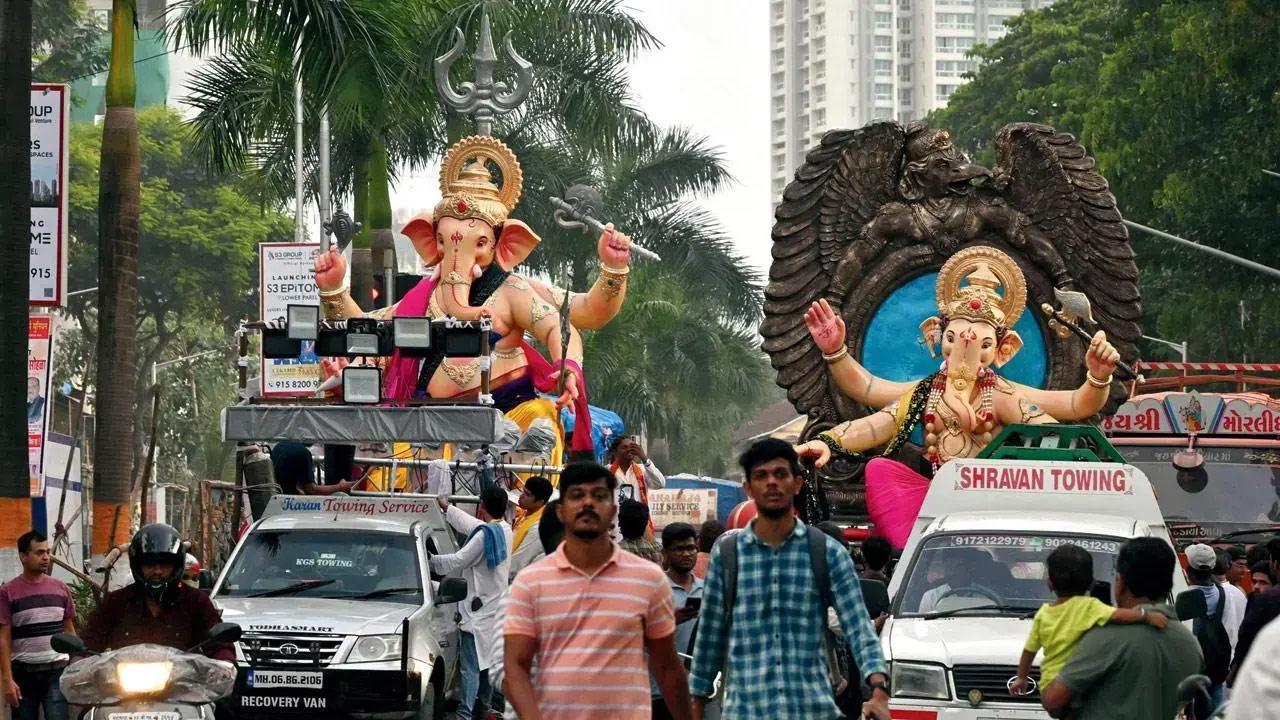Though the peak measured decibel level is almost the same as that of 2023, they are significantly lower than the 2019 peak of 121 dB

Representative image/ Atul Kamble
By all accounts, Ganeshotsav 2024 has been the quietest in the last five years, albeit by a small margin.
ADVERTISEMENT
Early reports, citing residents living around various popular procession routes and immersion spots in the city, said the noise levels were noticeably lower than in earlier years.
Now, confirmation has come in the form of a report by a city non-governmental organisation that measured the decibel levels, that indeed the celebrations were marginally lower than previous years, while still being above permissible limits.
Though the peak measured decibel level is almost the same as that of 2023, they are significantly lower than the 2019 peak of 121 dB.
Environmentalists have attested that the DJ ban has worked, but only to a certain extent. They say firecrackers and loudspeakers amplifying songs and speeches remain a problem.
In fact, a front-page report in this paper earlier in the week highlighted how mandals got around the DJ ban this year by employing live bands and dhol-tasha groups on moving trucks.
Activists have said they will approach the state to explore how the loopholes can be plugged.
While even a marginal decrease in noise levels should be welcomed, it was also distressing to read about the case of children at a Malad hospital enduring a terrifying night due to excessive noise from late-night processions.
Thus, while law enforcement agencies deserve a pat on their backs for enforcing the DJ ban, the city needs lasting solutions for noise pollution.
The best way to do this is by holding widespread awareness campaigns about the ill effects of noise pollution before the festival season is upon us. It is a simple case of awareness being better than enforcement.
 Subscribe today by clicking the link and stay updated with the latest news!" Click here!
Subscribe today by clicking the link and stay updated with the latest news!" Click here!







